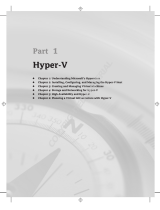
Table 1. OpenManage Enterprise feature and benefits (continued)
Feature Description Benefits
provides a management solution for
customers no longer using IPv4.
Automatic device
onboarding
The "make ready for management" step is automated
for iDRAC during the device discovery and inventory
process.
Minimizes human errors during the
process of discovery and setup. Helps
in getting the environment ready for on-
going management.
Device level role-based
access control (RBAC)
The scope of IT administration responsibilities can be
assigned to specific groups of devices.
Helps ensure IT Admin workload balance
and skill-set alignment.
Scope Based Access
Control (SBAC)
Administrators can limit OME users (user type: Device
Manager) to specific groups of devices
Scoped users are able to fully manage
their devices but will not be able view
or manage devices that don't belong to
them. This provides as additional layer of
security.
Server single sign-on Use of credential caching is employed to avoid
further password prompts when IT administration
perform management tasks or launch the iDRAC
virtual console.
Delivers fast and seamless management
across the PowerEdge server lifecycle
while enabling management from a single
level.
Monitoring and Event
Processing
Monitoring system health for discovered devices and
create event policy to dispatch hardware events.
Provides IT admin real-time feedback
for the health of their environment and
enables automated responses through
automation policy.
Comprehensive API All product features are accessible from a new
RESTful API that is conformant to the new popular
Redfish standard.
Enables IT Admins to automate features
and functions of OpenManage Enterprise
through tools such as PowerShell and
Python. It also allows them the flexibility
of integrating OpenManage Enterprise
into their existing IT processes.
Custom reports IT administrators can use a powerful reporting engine
to create customized reports.
Provides IT Admins rapid and easy access
to specific device information.
Modern UI with elastic
search capabilities
OpenManage Enterprise uses the modern HTML5
standard for its UI while enabling an elastic search
engine that allows IT administrators to find anything in
the console in a single search
Minimizes training time and maximizes
efficiency by delivering quick results on
searches involving devices, hardware and
software inventory, features, functions,
and so on. Also provides access from
various browsers, and mobile devices.
Firmware compliance
policies and updates
Firmware compliance policies allow IT administrators
to establish one or more firmware baselines for groups
of the PowerEdge servers in their environment.
Selectively update firmware that is not compliant with
the customer defined baselines.
Provides a simple method of enforcing
minimum firmware levels for the
PowerEdge servers that eliminates human
error and minimizes downtime. Reinforces
security by enabling customers to stay
current with the firmware recommended
by Dell EMC.
Configuration compliance
policies
Configuration compliance policies allow IT
Administrators to establish one or more configuration
baselines for groups of the PowerEdge servers in their
environment.
Enables a simple method to monitor the
PowerEdge servers against an established
baseline. Helps in enforcing security
standards and ensuring management
consistency across server BIOS, RAID,
network, and the iDRAC settings.
Bare-metal server
deployment
Automate server HW configuration deployment to a
bare-metal PowerEdge server and kick off unattended
operating system installation process.
Saves time and relies less on local
IT Administrators for provisioning and
configuring PowerEdge server hardware in
a reliable and consistent manner.
12 Systems Management Product Overview





















